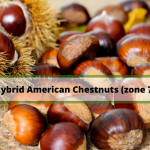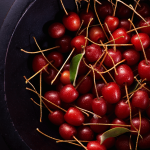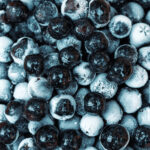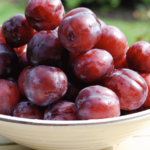Plant Profile: Sweet Chestnut – A Majestic Marvel of the Forest
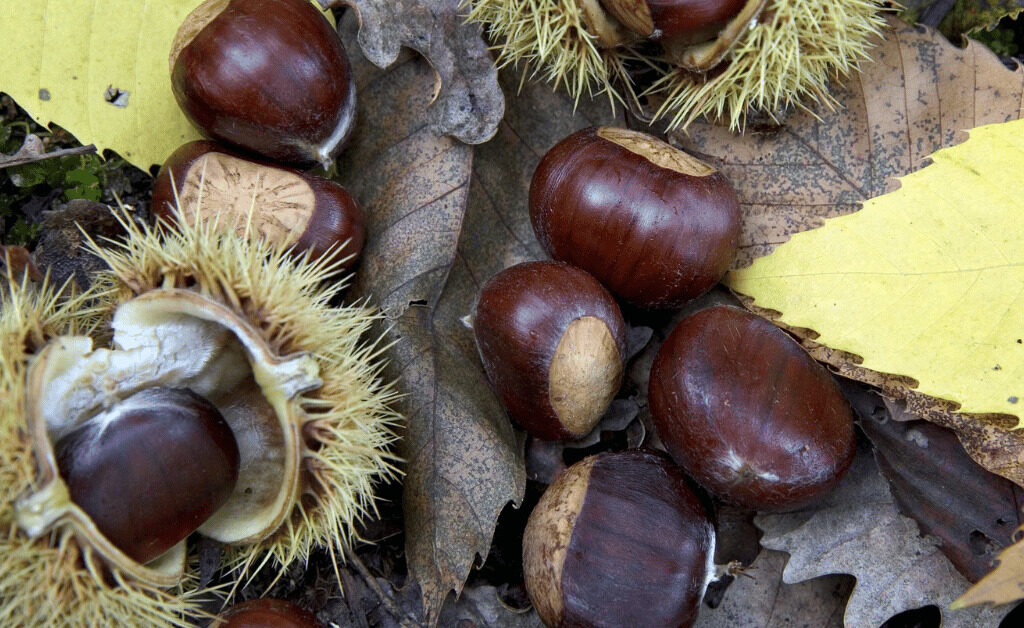
The Sweet Chestnut (Castanea sativa), also known as the Spanish Chestnut, is a species of flowering plant in the family Fagaceae. Native to Southern Europe and Asia Minor, it is widely recognized for its edible qualities.
Classification
The Sweet Chestnut belongs to the Plantae kingdom, in the Fagaceae family. Its genus is Castanea and the species is C. sativa.
Origin and Distribution
Originally from Southern Europe and Asia Minor, the Sweet Chestnut is now found throughout Europe. It’s particularly common in the Mediterranean region.
USDA Hardiness Zones
The Sweet Chestnut can grow in USDA zones 5-9.
Chill Hours Requirement
The Sweet Chestnut, like many temperate fruit trees, requires a period of cold dormancy in the winter to break dormancy, flower, and produce fruit properly. However, the specific number of chill hours can vary greatly depending on the specific variety of chestnut and the growing conditions. It’s generally agreed that Sweet Chestnuts require a period of cold dormancy, but the exact number of chill hours is cultivar-specific and not well-documented. For the most accurate information, it’s recommended to consult with a local extension service or a nursery specializing in chestnuts for your specific location and variety of chestnut.
Growth Habits
This tree typically reaches a height of 20-35 m (65-115 ft) and a width of 10-15 m (33-49 ft). It prefers well-drained soil and full sun exposure.
Role in a Food Forest
The Sweet Chestnut is typically found in the canopy layer of a food forest.
Benefits for Hugelkultur or Permaculture Systems
The tree’s fallen leaves and husks add organic matter to the soil, improving its fertility and structure.
Culinary Uses
The nuts of the Sweet Chestnut are not only edible but also naturally gluten-free, making them a great option for those with gluten intolerance or celiac disease. When ground into flour, the nuts can be used in a variety of gluten-free dishes. Here are a few ways the Sweet Chestnut can be used in the kitchen:
- Roasting: Chestnuts can be roasted and eaten as is, often enjoyed as a festive treat during the winter months.
- Chestnut Flour: The nuts can be dried and ground into a flour that’s perfect for baking. Chestnut flour is a popular ingredient in many traditional Italian recipes, including cakes, breads, and pastas.
- Chestnut Purée: The nuts can be boiled and puréed to make a sweet or savory spread. Sweetened chestnut purée can be used in desserts, while unsweetened purée can be used in soups or sauces.
- Candied Chestnuts: Also known as marron glacé, candied chestnuts are a sweet treat enjoyed in many parts of Europe.
- Raw Chestnuts: While chestnuts are often cooked before eating, they can also be consumed raw. However, raw chestnuts have a different texture and flavor compared to cooked ones, and they can be quite hard to peel.
Please note that while raw chestnuts can be eaten, they should be consumed in moderation as they can cause digestive discomfort in some people. Always wash chestnuts thoroughly before eating.
Cultural Significance
The tree has a long history of cultivation for its nuts, and it’s often associated with longevity and strength in various cultures.
Propagation and Care
The Sweet Chestnut tree can be propagated by seeds, which require a period of cold stratification for successful germination. This involves exposing the seeds to a cold and moist environment for a few weeks to mimic the natural conditions they would experience over winter. After stratification, the seeds can be sown in well-draining soil. Once established, the tree requires regular watering, especially during dry periods. Pruning should be carried out to maintain the tree’s shape and promote healthy growth. It’s also important to monitor the tree for signs of pests or diseases, as early detection can make treatment more effective.
Pests and Diseases
Common problems include the chestnut weevil and gall wasp. Diseases include ink disease and chestnut blight.
Harvesting and Storage
The nuts are typically harvested in the fall and can be stored in a cool, dry place.
Plant’s Lifespan
The Sweet Chestnut is a perennial plant, meaning it lives for more than two years. In fact, the Sweet Chestnut is known for its remarkable longevity. With the right growing conditions, these trees can live for over 2,000 years. This long lifespan allows the Sweet Chestnut to provide benefits to the ecosystem and to humans over many generations.
Warnings or Cautions
Handling
The outer shell of the Sweet Chestnut is spiny and can cause injury if not handled properly. It’s important to use caution when handling the nuts, especially when they’ve fallen to the ground.
Planting Location
Due to its extensive root system and large size, the Sweet Chestnut tree requires plenty of space to grow. It can reach a height of 20-35 m (65-115 ft), which could potentially cause issues if the tree is planted too close to buildings or other structures, as falling branches could cause damage. Additionally, the tree’s large size means it casts a significant amount of shade, which could affect the growth of other plants nearby. Care should be taken to plant these trees in a location where they have ample space to grow and where their roots and branches will not interfere with structures or other plants.
Environmental Impact
Root System and Soil Stabilization
The Sweet Chestnut tree has a deep and extensive root system. This helps to stabilize the soil and prevent erosion, making it an excellent choice for planting on slopes or other areas where soil erosion is a concern. However, due to its extensive root system, the tree requires plenty of space to grow. It may not be suitable for small gardens or areas close to buildings or other structures due to potential damage from the spreading roots.
Carbon Sequestration and Lifespan
The tree plays a significant role in carbon sequestration, which is the process of capturing and storing atmospheric carbon dioxide. This is one of the ways trees help combat climate change. The Sweet Chestnut tree can live for over 2,000 years. The older the tree gets, the longer that carbon will not be released back into the atmosphere, contributing to long-term carbon storage.
Wildlife Attraction
The Sweet Chestnut tree is a significant attractor of wildlife. Its nuts are a food source for various mammals, including squirrels and deer. Birds, too, are attracted to the tree for its nuts. Beyond its nuts, the tree’s flowers are a source of nectar and pollen for bees and other insects, contributing to local biodiversity. By providing food and habitat for a variety of species, the Sweet Chestnut tree plays an important role in supporting wildlife populations.
Companion Planting
The tree does well with plants that can tolerate its dense shade, such as ferns and certain types of shrubs.
Fun Facts
While it’s unclear exactly when the Sweet Chestnut was introduced to various parts of Europe, it’s often said that the Romans planted these trees along their roads for shade and as a source of food, contributing to the tree’s spread throughout Europe.
References and Further Reading: For more information, visit Wikipedia or Plants For A Future.

